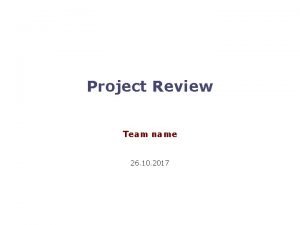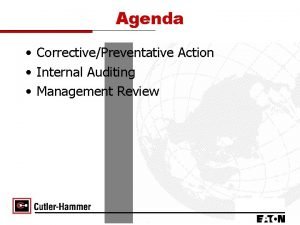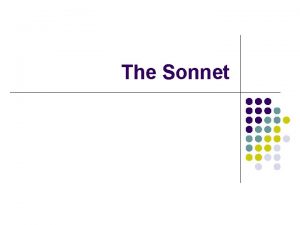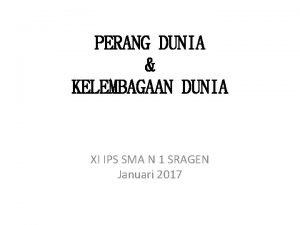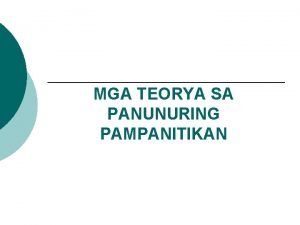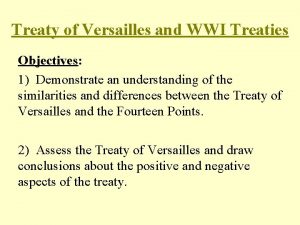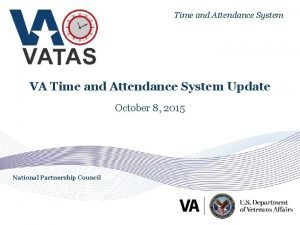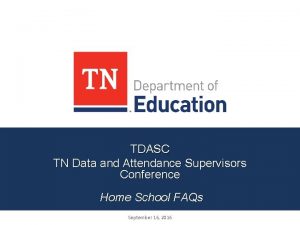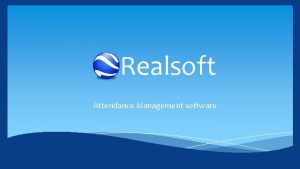Week Fourteen Agenda Attendance Announcements Review Week Fourteen

























































- Slides: 57


Week Fourteen Agenda Attendance Announcements Review Week Fourteen Information Final Exam Review

Final Exam Composition True/False questions: 100 Multiple choice questions: 25 (reviewed 7/19) Drawing questions: 25 Total points: 150

Security Issues Early networks were not designed for security as all users were trusted Modern network security requirements include the following: Prevent external hackers from getting access to the network Allow only authorized users into the network Prevent those inside the network from executing deliberate or inadvertent attacks Provide different levels of access for different types of users Protect data from misuse and corruption Comply with security legislation, industry standards, and company policies

Legislation and Security The U. S. Gramm-Leach-Bliley Act of 1999 (GLBA) provides limited privacy protections against the sale of private financial information and codifies protections against pretexting (concealing) The U. S. Health Insurance Portability and Accountability Act (HIPAA) to enable better access to health insurance, reduce fraud and abuse, and lower the overall cost of health care in the United States European Union data protection Directive 95/46/EC requires that European Union member states protect people's privacy rights when processing personal data, and that the flow of personal data between member states must not be restricted or prohibited because of these privacy rights

Legislation and Security The U. S. Sarbanes-Oxley Act of 2002 (SOX) establishes new or enhanced auditing and financial standards for all U. S. public company boards, management, and public accounting firms Payment Card Industry (PCI) Data Security Standard (DSS) developed to ensure safe handling of sensitive payment information The Canadian Personal Information Protection and Electronic Documents Act (PIPEDA): establishes rules for managing personal information by organizations involved in commercial activities

Security Terminology Virus a program that triggers a damaging outcome Trojan horse pretends to be an inoffensive application when in fact it might contain a destructive payload SPAM unsolicited or unwanted email that may contain viruses or links to compromised web sites Spyware a program that gathers information without the user's knowledge or consent and sends it back to the hacker

Security Terminology (con’t) Phishing emails that try to convince the victim to release personal information email appears to come from a legitimate source directs the victim to website that looks legitimate Spear phishing very targeted phishing attack may seem to come from a bank or from within the company information may be used to gain access to accounts.

Security Terminology (con’t) Social engineering the practice of obtaining confidential information by manipulating legitimate users. Examples include the following: Getting physical access: A hacker might get confidential information and passwords by having physical access to the organization. For example, the hacker might visit an organization and see passwords that are insecurely posted in an office or cubicle. Using a psychological approach: A hacker might exploit human nature to obtain access to confidential information. For example, a hacker might send an email or call and ask for passwords, pretending that the information is required to maintain the victim's account.

Threats Reconnaissance: the active gathering of information about an enemy or target to learn as much as possible about the target and the involved systems Usually the prelude to an attack against a particular target. Gaining unauthorized system access: the next step after reconnaissance gaining access to the system by exploiting the system or using social engineering techniques. Denial of service (Do. S): does not require direct access to a system is used to make systems unusable by overloading their resources such as CPU or bandwidth multiple sources conduct a Do. S attack, it is called a distributed Do. S(DDo. S) attack

Targets of Reconnaissance Attacks • Active targets (hosts/devices currently communicating on the network) • Network services that are running • Operating system platform • Trust relationships • File permissions • User account information

Threat: Gaining Unauthorized Access to Systems Use of usernames and passwords by unauthorized persons

Threat: Do. S • Do. S attacks are aggressive attacks on an individual computer or groups of computers with the intent to deny services to intended users. • Do. S attacks can target end user systems, servers, routers, and network links

Mitigate Do. S Attack • Use DHCP snooping to verify DHCP transactions and protect against rogue DHCP servers. DHCP snooping filters DHCP packets; • Use Dynamic Address Resolution Protocol (ARP) Inspection (DAI) to intercept all ARP requests and replies on untrusted interfaces (ports), • Implement unicast reverse path forwarding checks to verify if the source IP address is reachable so that packets from malformed or forged source IP addresses are prevented from entering the network. • Implement access control lists (ACL) to filter traffic. • Rate-limit traffic such as incoming ARP and DHCP requests.

Port Scanners Network Mapper (Nmap): Nmap is a free open-source utility for network exploration or security auditing. It was designed to rapidly scan large networks; it also maps single hosts. Net. Stumbler: Net Stumbler is a tool for Microsoft Windows that facilitates detection of WLANs using the IEEE 802. 11 b, 802. 11 a, and 802. 11 g WLAN standards. A trimmed-down version of the tool called Mini. Stumbler is available for Windows. Super. Scan: Super Scan is a popular Windows portscanning tool with high scanning speed, host detection, extensive banner grabbing, and Windows host enumeration capability.

Port Scanners (con’t) Kismet: Kismet is an 802. 11 Layer 2 wireless network detector, sniffer, and IDS that can sniff 802. 11 b, 802. 11 a, and 802. 11 g traffic. It identifies networks by passively collecting packets and detecting standard named networks, detecting hidden networks, and inferring the presence of non-beaconing networks (networks that do not advertise themselves) via data traffic.

Vulnerability Scanners Nessus: Nessus is an open-source product designed to automate the testing and discovery of known security problems. A Windows graphical front end is available, although the core Nessus product requires Linux or UNIX to run. Microsoft Baseline Security Analyzer (MBSA): Although it’s not a true vulnerability scanner, companies that rely primarily on Microsoft Windows products can use the freely available MBSA scans the system and identifies whether any patches are missing for products such as the Windows operating systems, Internet Information Server, SQL Server, Exchange Server, Internet Explorer, Windows Media Player, and Microsoft Office products. MBSA also identifies missing or weak passwords and other common security issues.

Vulnerability Scanners (con’t) Security Administrator’s Integrated Network Tool (SAINT): SAINT is a commercial vulnerability assessment tool that runs exclusively on UNIX.

Risks Confidentiality of data: ensures that only authorized users can view sensitive information prevents theft, legal liabilities, and damage to the organization Integrity of data: ensures that only authorized users can change sensitive information guarantees the authenticity of data System and data availability: ensures uninterrupted access to important computing resources prevents business disruption and loss of productivity.

Risk: Integrity Violations and Confidentiality Breaches • Integrity violations can occur when an attacker attempts to change sensitive data without proper authorization • Confidentiality breaches can occur when an attacker attempts to read sensitive data without proper authorization • Confidentiality attacks can be extremely difficult to detect because the attacker can copy sensitive data without the owner’s knowledge and without leaving a trace

Risk: Integrity Violations and Confidentiality Breaches

Mitigation • Limit access to network resources using network access control, such as physical separation of networks, restrictive firewalls, and VLANs. • Limit access to files and objects using operating system-based access controls, such as UNIX host security and Windows domain security. • Limit user access to data by using applicationlevel controls, such as different user profiles for different roles.

Mitigation (con’t) • Use cryptography to protect data outside the application. Examples include encryption to provide confidentiality, and secure fingerprints or digital signatures to provide data authenticity and integrity.

Considerations Business needs: What the organization wants to do with the network Risk analysis: The risk-versus-cost balance Security policy: The policies, standards, and guidelines that address business needs and risk Industry-recommended practices: The reliable, well-understood, and recommended security practices in the industry Security operations: The process for incident response, monitoring, maintenance, and compliance auditing of the system

What is a Network Security Policy? • A Network Security Policy is a broad, end-toend document designed to be clearly applicable to an organization's operations. • The policy is used to aid in network design, convey security principles, and facilitate network deployments • Is a complex document meant to govern items such as data access, web browsing, password usage, encryption, and email attachments

What is in the Network Security Policy? • The network security policy outlines rules for network access, determines how policies are enforced, and describes the basic architecture of the organization's network security environment • The network security policy outlines what assets need to be protected and gives guidance on how it should be protected • Because of its breadth of coverage and impact, it is usually compiled by a committee

Formulating A Network Security Policy

Risk Assessment and Management As part of developing a security policy, you should perform a risk assessment and cost-benefit analysis, including considering the latest attack techniques • Risk assessment defines threats, their probability, and their severity • Network security employs risk management to reduce risk to acceptable levels. • It is important to note that risks are not eliminated by network security; they are reduced to levels acceptable to the organization • The cost of security should not exceed the cost of potential security incidents

Know the Risks • What assets to secure • The monetary value of the assets • The actual loss that would result from an attack • The severity and the probability that an attack against the assets will occur • How to use security policy to control or minimize the risks

Risk Index The probability of risk (in other words, the likelihood that compromise will occur) The severity of loss in the event of compromise of an asset The ability to control or manage the risk

The Concept of Trust • Trust is the relationship between two or more network entities that are permitted to communicate • Security policy decisions are largely based on this premise of trust. • If you are trusted, you are allowed to communicate as needed. • However, at times security controls need to apply restraint to trust relationships by limiting access to the designated privilege level.

Domains of Trust are a way to group network systems that share a common policy or function. Network segments have different trust levels, depending on the resources they are securing. When applying security controls within network segments

Trust in Operation on a Cisco ASA Appliance

Identity • The identity is the whoof of a trust relationship. • The identity of a network entity is verified by credentials: Passwords, tokens, and certificates

Authentication (Proof of Identity) Based on one (or more) of the following: • Something the subject knows: This usually involves knowledge of a unique secret, which the authenticating parties usually share. To a user, this secret appears as a classic password, a personal identification number, or a private cryptographic key. • Something the subject has: This usually involves physical possession of an item that is unique to the subject. Examples include password token cards, Smartcards, and hardware keys.

Authentication (Proof of Identity) • Something the subject is: This involves verifying a subject’s unique physical characteristic, such as a fingerprint, retina pattern, voice, or face.

Access Control • Access control is the ability to enforce a policy that states which entities (such as users, servers, and applications) can access which network resources.

Access Control Through AAA Which entities (such as users, servers, and applications) can access which network resources. • Authentication establish the subject's identity • Authorization define what a subject can do in a network limit access to a network • Accounting audit trail provides evidence and accounting of the subject's actions real-time monitoring provides security services such as intrusion detection.

Trust and Identity Management Technologies • ACLs: Lists maintained by network devices such as routers, switches, and firewalls to control access through the device. An example is an ACL on a router that specifies which clients, based on their IP addresses, can connect to a critical server in the data center. • Firewall: A device designed to permit or deny network traffic based on certain characteristics, such as source address, destination address, protocol, port number, and application. The firewall enforces the access and authorization policy in the network by specifying which connections are permitted or denied between security perimeters.

Trust and Identity Management Technologies (con’t) • NAC: A set of technologies and solutions that uses the network infrastructure to enforce security policy compliance on all devices trying to access network computing resources, thereby limiting damage from emerging security threats. • IEEE 802. 1 X: An IEEE standard for media-level access control, providing the ability to permit or deny network connectivity, control VLAN access, and apply traffic policy based on user or device identity. • Cisco Identity-Based Networking Services (IBNS): An integrated solution combining several Cisco products that offer authentication, access control, and user policies to secure network connectivity and resources.

ACL (Access Control List)

Firewall A device designed to permit or deny network traffic based on certain characteristics The firewall enforces the access and authorization policy in the network by specifying which connections are permitted or denied between security perimeters

Cisco NAC • Network Admission Control http: //www. cisco. com/assets/cdc_content_eleme nts/flash/nac/demo. htm

Confidentiality Through Encryption Cryptography provides confidentiality through encryption, which is the process of disguising a message to hide its original content

Encryption Keys • For encryption and decryption to work, devices need keys. The sender needs a key to lock (encrypt) the message, and the receiver needs a key to unlock (decrypt) the message. • Two types of keys: shared secrets (symmetric) The keys to encode and decode the message are the same Asymmetric keys -the Public Key Infrastructure (PKI) The keys to encode and decode are different, but related; they come as a pair (the public/private keys)

Integrity Through Secure Fingerprints and Digital Signatures • Integrity means that the data have not been altered • Proof the data have not changed is provided through a combination of encryption and a hash function • Digital signatures use PKI (Asymmetric keys) • Secure Fingerprints use a shared secret key

Integrity Through Secure Fingerprints and Digital Signatures (con’t) HMAC is an algorithm used for secure fingerprints

What is a hash? • A hash is the result of a one-way mathematical function • A hash is a fixed length string produced by a hashing function: Both the message and hash are sent The message recipient uses the same hash function on the message Their hash result should be the same as the hash that was sent; otherwise, the message has changed

What is a hash?

VPNs • IPsec VPNs use the IKE protocol to exchange keys; IKE normally uses PKI certificates. IPsec requires both communicating endpoints to run software that understands IPsec. Most routers and security appliances currently support highspeed IPsec • SSL VPNs are built on top of the TCP layer using port 443, the HTTPS port. SSL VPNs are used extensively to provide confidentiality for web traffic and are supported by all major browsers

Intrusion Detection System

Intrusion Detection System

Network Security Solutions • Cisco IOS Routers Cisco IOS Firewall Cisco IOS IPSec VPN Modules • VPN Concentrators • ASA/PIX • IPS

Implementing Security Throughout the Enterprise

Enterprise Campus

Enterprise Edge and WAN Security

Upcoming Deadlines • Final exam administered by the Student Learning Center (SLC) on August 1 – 6.
 Pvu market cap
Pvu market cap R/announcements
R/announcements David ritthaler
David ritthaler Page 113 of fahrenheit 451
Page 113 of fahrenheit 451 Kluver bucy syndrome
Kluver bucy syndrome General announcements
General announcements Agenda sistemica y agenda institucional
Agenda sistemica y agenda institucional Project review agenda
Project review agenda Management review agenda
Management review agenda Week by week plans for documenting children's development
Week by week plans for documenting children's development Www.gottoteach.com 5-a-day language review answer key
Www.gottoteach.com 5-a-day language review answer key Daily language review week 18 answers
Daily language review week 18 answers Did you see big
Did you see big Daily language review week 14 answer key
Daily language review week 14 answer key Daily language practice
Daily language practice Dgp week 10
Dgp week 10 Fourteen line poem written in iambic pentameter
Fourteen line poem written in iambic pentameter A fourteen-line poem, usually written in iambic pentameter
A fourteen-line poem, usually written in iambic pentameter One two three four five six to hundred
One two three four five six to hundred Wilsons fourteen points and the treaty of versailles
Wilsons fourteen points and the treaty of versailles Perang dunia dan kelembagaan dunia
Perang dunia dan kelembagaan dunia It is the star to every wand'ring bark meaning
It is the star to every wand'ring bark meaning The diagram below represents the placoderm fish
The diagram below represents the placoderm fish What is poetry in literature
What is poetry in literature Siya ang may akda ng fourteen points
Siya ang may akda ng fourteen points Fourteen line lyric poem
Fourteen line lyric poem A 14 line lyric poem
A 14 line lyric poem Siya ang may akda ng fourteen points
Siya ang may akda ng fourteen points Lyric poem with 14 lines
Lyric poem with 14 lines Dulog sosyolohikal
Dulog sosyolohikal Fourteen
Fourteen Centralization by henri fayol
Centralization by henri fayol Fourteen points and treaty of versailles similarities
Fourteen points and treaty of versailles similarities Quality is free
Quality is free Space bar
Space bar Chapter review motion part a vocabulary review answer key
Chapter review motion part a vocabulary review answer key Writ of certiorari ap gov example
Writ of certiorari ap gov example Nader amin-salehi
Nader amin-salehi Search strategy example
Search strategy example Narrative review vs systematic review
Narrative review vs systematic review Objectives of work immersion sample
Objectives of work immersion sample Coral springs middle school
Coral springs middle school Coral springs middle school
Coral springs middle school Vatas timekeeping
Vatas timekeeping Suny time and attendance
Suny time and attendance Biometric attendance system proposal
Biometric attendance system proposal Tn data and attendance conference
Tn data and attendance conference Stagg attendance
Stagg attendance What is shape
What is shape Shaala siddhi school improvement plan example
Shaala siddhi school improvement plan example Seminary attendance sheet
Seminary attendance sheet Realsoft attendance management system
Realsoft attendance management system Akimel attendance line
Akimel attendance line Kau eli attendance
Kau eli attendance Focus on attendance
Focus on attendance Ohio immunization summary for school attendance
Ohio immunization summary for school attendance Noaa web ta
Noaa web ta Wgu sap appeal
Wgu sap appeal







